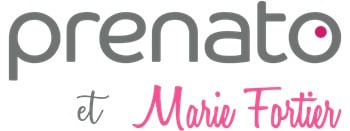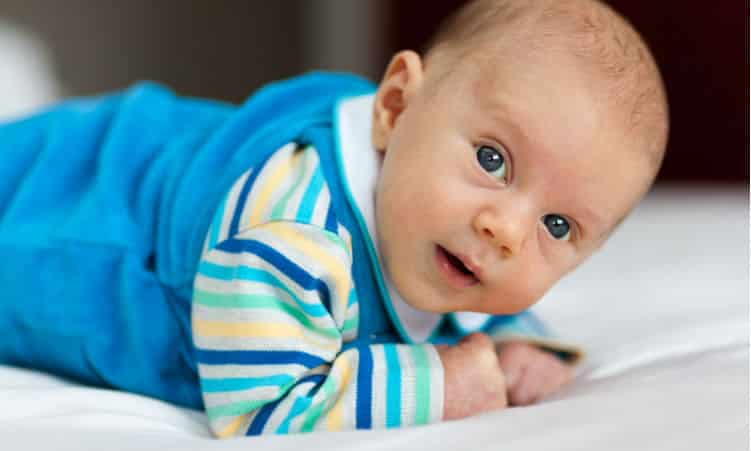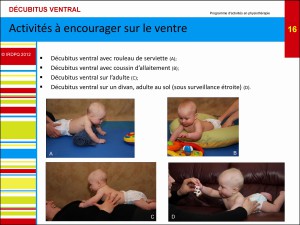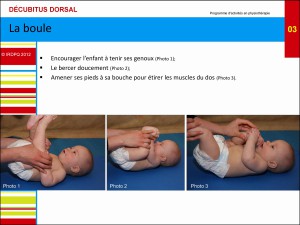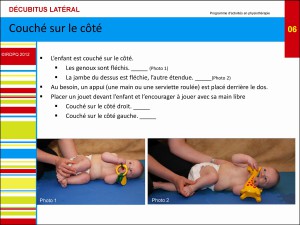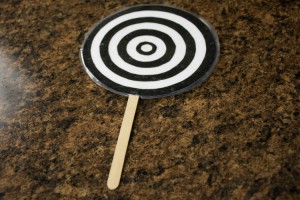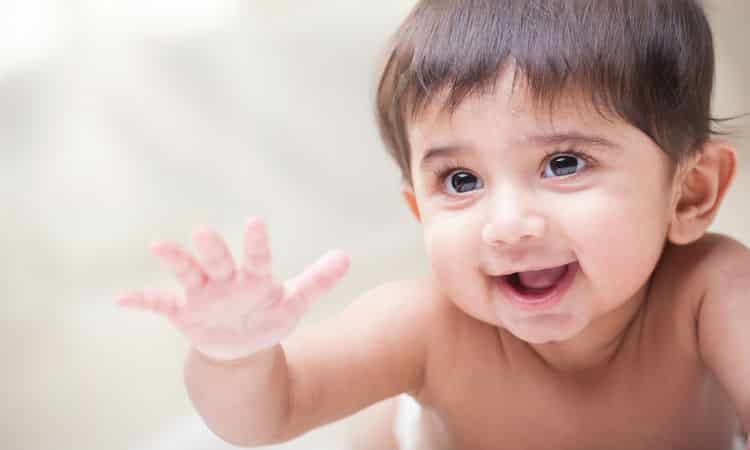To read the start of this article, go to Baby Motor Development from 0 to 3 and 4 to 6 months.
The development stages for babies from 0 to 3 months are associated with their senses after birth.
The sense of touch is essential at this stage, and everything goes in their mount (oral stage). The baby will be interested in faces, smiles and they can make different expressions, even more so with their parents. Voices and smells are very sensitive to the newborn. They act as points of reference in their new environment.
The baby can see up to about 30 cm, which is usually the natural distance when mom or dad hold their baby in their arms or when breastfeeding. Babies note the different facial expressions but don’t understand them.
 At this age, the baby will start to turn their head to follow their eyes. They will raise their chin and their head on the stomach position to have contact with their environment, but with difficulty. Their head is heavy, and they must learn to raise it and hold it there, while at the same time moving more harmoniously over time. This explains why a baby can lift their head then let it fall on your shoulder and hit the front of their nose. They haven’t yet acquired proper control.
At this age, the baby will start to turn their head to follow their eyes. They will raise their chin and their head on the stomach position to have contact with their environment, but with difficulty. Their head is heavy, and they must learn to raise it and hold it there, while at the same time moving more harmoniously over time. This explains why a baby can lift their head then let it fall on your shoulder and hit the front of their nose. They haven’t yet acquired proper control.
In their first three months, the baby progressively relaxes regarding their physiological flexions. Their appendages will stretch out more in a more natural way. On their back the baby’s appendages are symmetrical, and they will learn to control their movements as they want.
This age is also an important stage where attachment links are built with their parents. All their senses allow them to start their socio-affective development with their environment, and the smile marks the start of socialisation. It’s also the start of emotional self-regulation, for example sucking their thumb. They can have discomfort, frustrations which they will express in this way.
Suggested Activities for Babies from 0 to 3 Months
- Stomach position:
Place the baby frequently and repetitively on their stomach. At the start, skin-to-skin with mom and dad is perfect, as they’re placed on their stomach. You can put a roll (rolled sheet or towel) under the baby’s armpits to support it and help it maintain that position, just like a photographer would do it to see a baby’s face. To do this activity, chose a waking period and do it for short periods at the start—about two minutes. They may complain, and doing this activity over time will help them explore this position easier by working their musculature over short periods. Start on the side if the stomach position is too difficult, then gradually move them towards their stomach.You can start the rotation towards the stomach by turning the baby softly on the side then towards their stomach. Diaper changing is a great time to do this exercise.
- Pull to sit:
The pull to sit means taking the baby by the shoulders, placing your fingers behind their head when they’re not yet able to support it. You can start in the sitting position and slowly lower them. At this age, you must always avoid placing the baby in a seated or standing position. You don’t want to try to jump over development stages. You need to encourage them at the right time when the baby is physically and neurologically ready to do it.
- The ball:
The ball game is perfect to encourage your baby to bring their feet towards their face while ensuring that they bend their torso, knees and hips.
- Place them in a lateral position:
Playing with your baby when they are on their side is very important as it starts the movement that they will have to soon do – turning by themselves from the back to stomach and vice versa.
- Play with toes:
- A massage:
Massages are another way to stimulate your baby with touch, and as a bonus they love it. Who wouldn’t like, with a calming face talking or singing to them at the same time?
- Make faces:
Babies imitate sounds, and the face that they see is a way to be in contact with them during their learning process. Moreover, you can laugh and have fun together!
- Cards with contrasting colours:
Babies are attracted to contrasting colours, especially black on white.
- Singing:
Singing pleases them, and they will appreciate you singing them a lullaby or installing a musical mobile above their changing table, for example. They can listen to the mobile and admire it when you’re changing their diaper, giving them both a vision and feeling of different stimuli.
Your baby is growing fast and learning fast, but there’s so much more to do!
To continue reading, go to the post Babies development from 4 to 6 months.
